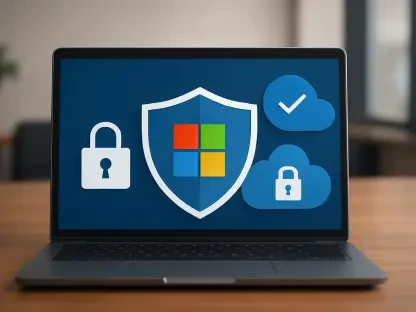In the realm of cybersecurity, few can navigate the complexities like Rupert Marais. As our in-house security specialist, Rupert brings unrivaled expertise in endpoint and device security, cybersecurity strategies, and network management. Amidst the increasing trend of mass layoffs across industries, the cybersecurity landscape is fraught with unique challenges. Rupert shares his insights on the overlooked risks during these turbulent times and how organizations might better prepare themselves.
Can you explain the potential cybersecurity risks organizations face during mass layoffs?
Mass layoffs present a significant threat to an organization’s cybersecurity posture. When many employees are suddenly let go, their access credentials often become vulnerable targets. These dormant accounts can serve as gateways for malicious actors looking to exploit a company’s network. The sheer number of decommissioned identities needs careful management to avoid leaving open doors for potential breaches.
How does cutting employee access abruptly contribute to organizational chaos?
Abruptly cutting access can lead to operational disarray. When systems are accessed or disabled without a proper plan, it breeds confusion and potential security loopholes. It’s crucial to implement systematic offboarding processes that marry both speed and precision to ensure systems remain secured while transitioning employees out of their roles.
Why do companies often overlook cybersecurity when planning layoffs?
Cybersecurity often takes a backseat during layoffs because the focus is on immediate operational and financial adjustments. Managers may not prioritize cybersecurity amidst the organizational restructuring, yet this oversight can lead to long-term vulnerabilities. This is frequently due to a lack of comprehensive plans to integrate cybersecurity upgrades within the layoff process.
What are dormant identities, and why are they considered backdoors for attackers?
Dormant identities are the unused credentials that remain in the system after employees leave the company. They pose significant risks as they can be exploited by hackers to gain unauthorized access into secure enterprise networks. Without regular audits and decommissioning, these identities essentially become dormant yet dangerous footholds for attackers.
Could you elaborate on the growing demand for orphan credentials in criminal marketplaces?
Orphan credentials, essentially unused or forgotten user accounts, have witnessed growing demand in criminal marketplaces. These credentials are attractive to cybercriminals because they offer a seemingly legitimate means of entering a network undetected. As organizations unwittingly leave these credentials active, criminals see them as ideal backdoors.
How can credentials belonging to former users with elevated access increase risk to an organization?
Credentials tied to former users with elevated access can be especially risky. These users often have broad permissions, enabling access to sensitive areas of the organizational network. If not properly disabled, attackers who acquire these credentials can wreak havoc—gaining control over critical data and network components, leading to potentially severe consequences.
What roles do AI agents and bots play as potential insider threats post-layoffs?
AI agents and bots, designed to automate tasks, can become threats if they’re left unmonitored following layoffs. These technologies might continue executing commands from employees who are no longer part of the organization, creating avenues for exploitation if attackers manipulate these tasks.
Why is it critical for organizations to view disgruntled employees as insider threats?
Disgruntled employees can become significant insider threats due to the access and knowledge they have about the organization. Individuals may act maliciously by leaking data, tampering with systems, or even committing acts of sabotage. Being proactive and acknowledging these risks can help preemptively mitigate potential damage.
Can you provide statistics or trends that highlight the increase in insider fraud incidents?
Recent research indicates that insider fraud incidents have risen by approximately 20% over the past few years. This uptick reflects the rising prevalence of credential misuse, often due to unresolved employee grievances or ineffective offboarding processes.
How significant is the threat of data extraction and rage deletion by disgruntled employees?
The threat of data extraction and rage deletion by disgruntled employees is quite significant. Such acts can lead to severe losses in data integrity and operational capabilities. With statistics showing 1 in 20 employees admitting to such behavior, organizations must remain vigilant and prepare countermeasures to safeguard their data.
How can organizations foster a healthier security culture to mitigate risks associated with layoffs?
Organizations can mitigate risks by fostering a security-conscious culture that encourages transparency and communication. This approach involves regular training, clear channels for communication between departments, and implementing proactive security measures that address stressors and grievances before they escalate into security threats.
What challenges do IT departments face when deactivating hundreds of employee identities at once?
Deactivating multiple identities simultaneously poses logistical challenges for IT departments. They must maintain meticulous accuracy to avoid oversight in managing permissions and accesses. The complexity increases when handling permissions across a myriad of applications, which demands robust coordination and planning.
How can phasing or staggering layoffs help minimize errors during credential decommissioning?
Phasing or staggering layoffs allows IT departments to focus on smaller groups, reducing the likelihood of errors. This methodical approach ensures each affected credential is appropriately decommissioned, enabling detailed scrutiny over permissions, reducing chances for oversight, and maintaining organizational security.
Why is adopting zero-trust network access and least-privilege access important in these situations?
Adopting zero-trust access and least-privilege policies restricts access rights, ensuring that users only have access to necessary systems and data. These protocols minimize exposure by ensuring that if a user account is compromised, the potential for harm is greatly reduced due to limited access.
How can single sign-on services be beneficial during the offboarding process?
Single sign-on services simplify the offboarding process by centralizing credential management. Once access is turned off, the user’s ability to enter multiple applications simultaneously is revoked. This approach reduces administrative burdens and increases efficiency while ensuring security is intact.
What role does automation play in managing identity decommissioning during layoffs?
Automation streamlines identity management, ensuring swift and efficient credential decommissioning. It facilitates timely revocation of access and enhances visibility across platforms, encompassing cloud environments and other systems. Automation curtails human error and accelerates the offboarding process, especially critical when layoffs involve large numbers.
How can organizations ensure timely termination of user access when announcing layoffs?
Ensuring timely access termination requires synchronized efforts between HR and IT. Implementing automated systems that instantly disable credentials upon notification of employee termination is paramount. Organizations should prioritize communication and create protocols to expedite these interdepartmental processes during layoffs.
What strategies should be prioritized to streamline the offboarding process and reduce risk?
Prioritizing risk management strategies like inventory audits, role-based access reviews, and utilizing identity governance frameworks can streamline offboarding. Moreover, integrating these approaches with efficient communication between HR and IT ensures that access terminations proceed smoothly, reducing risk to the organization.
Why is building communication lines between HR and IT essential during layoffs?
Building robust communication channels between HR and IT is essential for coordinated security efforts. These lines of communication ensure that as soon as HR initiates termination procedures, IT can simultaneously take necessary action to protect organizational resources by promptly disabling access.
What preparatory steps can organizations take during stable times to manage layoffs better?
During stable periods, organizations can conduct regular audits and establish clear protocols for access management. Training employees on security best practices also instills a proactive security culture. Tabletop exercises and detailed planning at the executive level help ensure preparedness for efficient emergency execution.
How does “shadow IT” complicate visibility in organizations, especially during layoffs?
Shadow IT represents unauthorized applications and devices, often untracked by IT departments. During layoffs, these elements complicate visibility as they can remain unmonitored, posing unchecked security risks. Without clear oversight, these systems can become significant vulnerabilities if accessed improperly.
What measures can be taken to identify shadow IT before layoffs occur?
Advance identification of shadow IT demands comprehensive audits and stringent policy enforcement. Financial tracking and inventory of applications help detect unauthorized systems early, providing the opportunity for IT teams to bring them under the organizational security framework before layoffs.
How can audits and tabletop exercises aid in preparing for employee terminations?
Audits and tabletop exercises prepare organizations for unexpected employee terminations by identifying gaps in security protocols and improving procedural efficiency. They simulate potential scenarios, exposing vulnerabilities and enabling teams to refine strategies for real-world challenges systematically.
Why is it crucial to discuss and plan for layoffs at the executive level before they happen?
Discussing and planning layoffs at the executive level ensures comprehensive foresight and coordination. This proactive approach allows organizations to address potential risks, align security strategies, and prepare structural adaptations necessary to safeguard operations during turbulent transitions.









